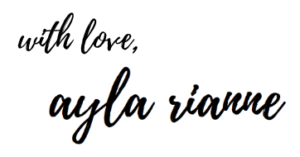![]()
I am very passionate about my bullet journal and everything it has brought to my life. I have always looked forward to the day every year when the following year agendas come out. I would scope out the one I would think would work best, but it would never have everything I wanted. In addition to my agenda I would have meal planning lists, I would try to incorporate habit tracking like how much water I’m drinking, massive to do lists, excel file of gift giving lists, password trackers, and on and on. As you can see I like to build lists! When I found out about the bullet journal I instantly fell in love… I could incorporate all these things in one!
My bullet journal has also provided a creative outlet for me. In recent years I have been practicing my calligraphy and this has been a perfect outlet for me to practice lettering and creative little doodles!
Whenever I whip out my bullet journal, I always get a lot of compliments on it. However, I always hear a variation on the same thing:
“I don’t have time for this”
“I’m not creative enough for this”
“This is too complicated for me”
And this is the brilliant thing about a bullet journal, you can make it whatever you want it to be! Don’t have time? Simplify your spreads. Don’t feel the creative juices flowing? Use Pinterest and plan with me’s for inspiration. Don’t know where to start? Follow this bullet journal for beginner series!
Here is what you have in store in this series…
Part 1: The Who/What/When/Where/Why. A bullet journal introduction
Part 2: Bullet journal materials. What do you need?
Part 3: Initial set up of a bullet journal (the Key and the Index)
Part 4: Annual vs Monthly vs Weekly vs Daily Spreads
Part 5: Annual Collections
Part 6: Monthly Collections
Part 7a: Annual Plan With Me
Part 7b: Monthly Plan With Me
What to expect in each part of the series
I’m going to use this post, Part 1 of the bullet journal for beginners series, to give you an intro into some of the bullet journal terminology, what to expect, and to get you excited for what’s to come!
In part 2 of this series I will be going over my favorite bullet journal materials. This includes some journal recommendations, favorite pens, and my favorite markers! I will also give you the bare minimum just to get you started.
Part 3 of this series will go over the initial set up of a bullet journal. Often, this includes an index and a legend. Here, we will go more in depth about the legend and some of the different symbols (signifiers) used in a bullet journal.
Then we will get into part 4 which will explain the difference between an annual spread vs a monthly spread vs a weekly spread vs a daily spread. I will discuss how each spread feeds into the next spread.
Things really start to get fun in part 5! At the beginning of every journal, I will start with annual collections. Annual collections will be anything I want to reference for the whole year (or the whole span of the journal). Examples are a birthday tracker, books I want to read, and a password tracker.
Part 6 is similar to part 5 but monthly collections. I will give you my must have monthly collections, how I set them up, and many other ideas of monthly collections. I use my monthly collections everyday and I really try to have some fun with them! Examples of monthly collections are habit trackers for the month, weather tracker, and a gratitude log.
Lastly I am going to do two plan with me’s: an annual plan with me (just in time for 2019!) and a monthly plan with me. This will give you an exact breakdown of every collection and spread I use when setting up my bullet journal.
Terminology:
-BuJo: Bullet Journal
-Collection/Spread/Layouts: Collections (or sometimes called spreads or layouts) are the “modules” or different pages of topics of things you want in your bullet journal. I know this sounds vague but collections are the icing on the bullet journal cake. Some examples of collections are habit trackers, meal planning pages, books I want to read, and the list goes on and on! I could go on and on about collections so I’ll stop here and see part 5 and part 6 for more on collections!
-Bullets: A summarized version of what you want to say
-Tasks: Something you need to get done. Often represented by a bullet point.
-Events: Often represented by a small little circle.
-Notes: A jotted short form of something you want to remember. Often represented by a dash.
-Signifiers: Symbols used in the bullet journal. These will located in the legend. The bullet point, small little circle, and dash are all examples of signifiers.
Final Thoughts
The creator of the bullet journal, Ryder Carroll, summarizes the bullet journal in such a beautiful simple way that really resonates with me…
The Bullet Journal is a customizable and forgiving organization system. It can be your to-do list, sketchbook, notebook, and diary, but most likely, it will be all of the above. It will teach you to do more with less. – Ryder Carroll (www.bulletjournal.com)
The bullet journal really can be whatever you need it to be.
I hope you’re with me so far! I can’t wait to continue on this journey with you. See you next week.

Pin Me!

Bullet Journal for Beginner’s Series
Part 1: The Who/What/When/Where/Why. A bullet journal introduction (you are here!)
Part 2: Bullet journal materials. What do you need? .
Part 3: Initial set up of a bullet journal (the Key and the Index) .
Part 4: Annual vs Monthly vs Weekly vs Daily Spreads .



Leave a Reply